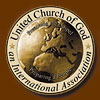AMERICAN RED CROSS - FIRST AID PRIMER
If you encounter someone who is injured, apply the emergency action steps: Check-Call-Care.
Check the scene to make sure it is safe for you to approach. Then check the victim for unconsciousness and life-threatening conditions. Someone who has a life-threatening condition, such as not breathing or severe bleeding, requires immediate care by trained responders and may require treatment by medical professionals.
Call out for help. There are some steps that you can take, however, to
Care for someone who is hurt, but whose injuries are not life threatening.
Control Bleeding
- Cover the wound with a dressing, and press firmly against the wound (direct pressure).
- Elevate the injured area above the level of the heart if you do not suspect that the victim has a broken bone.
- Cover the dressing with a roller bandage.
- If the bleeding does not stop:
- Apply additional dressings and bandages.
- Use a pressure point to squeeze the artery against the bone.
- Provide care for shock.
Care for Shock
- Keep the victim from getting chilled or overheated.
- Elevate the legs about 12 inches (if broken bones are not suspected).
- Do not give food or drink to the victim.
Tend Burns
- Stop the burning by cooling the burn with large amounts of water.
- Cover the burn with dry, clean dressings or cloth.
Care for Injuries to Muscles, Bones and Joints
- Rest the injured part.
- Apply ice or a cold pack to control swelling and reduce pain.
- Avoid any movement or activity that causes pain.
- If you must move the victim because the scene is becoming unsafe, try to immobilize the injured part to keep it from moving.
Be Aware of Biological/Radiological Exposure
- Listen to local radio and television reports for the most accurate information from responsible governmental and medical authorities on what's happening and what actions you will need to take. The Web sites referenced at the end of this brochure can give you more information on how to protect yourself from exposure to biological or radiological hazards.
Reduce Any Care Risks
The risk of getting a disease while giving first aid is extremely rare. However, to reduce the risk even further:
- Avoid direct contact with blood and other body fluids.
- Use protective equipment, such as disposable gloves and breathing barriers.
- Thoroughly wash your hands with soap and water immediately after giving care.
It is important to be prepared for an emergency and to know how to give emergency care.
More Information
All of these recommendations make good sense, regardless of the potential problem. For more information on how to get ready for disaster and be safe when disaster strikes, or to register for a first aid and AED/CPR course, please contact your local American Red Cross chapter. You can find it in your telephone directory under "American Red Cross" or through our home page at www.redcross.org under "your local chapter."
|

